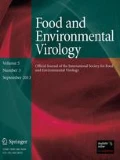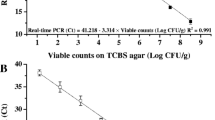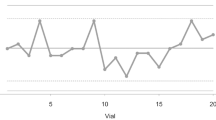Abstract
Enteric bacteriophages (somatic coliphages, F-specific coliphages or both together) are now recognized as useful viral indicators in water, shellfish, and biosolids and are being progressively included in national and international sanitary regulations. Among them, somatic coliphages have an advantage in that they usually outnumber F-RNA coliphages in water environments. Their enumeration using Modified Scholten’s (MS) media, following the ISO 10705-2 standard for the growth of Escherichia coli host strain WG5, is highly efficient and a common practice worldwide. These media contain a high concentration of nutrients, which may be modified to save costs without loss of bacterial growth host efficiency. This study explored reducing the concentration of nutrients in the current formulation and/or incorporating new components to improve the host bacterial growth and/or the enumeration of somatic coliphages at an affordable analytical cost. A twofold dilution of the original MS media was found not to affect the bacterial growth rate. The addition of combinations of assayed compounds to twofold diluted MS media slightly enhanced its analytical performance without altering bacterial growth. By generating savings in both cost and time while maintaining optimal results, media dilution could be applied to design new simple applications for coliphage enumeration.





Similar content being viewed by others
References
Adams, M. H. (1959). Bacteriophages. New York: Interscience Publishers.
Anonymous, (1995). ISO 10705-1. Water quality: Detection and enumeration of bacteriophages—Part 1: Enumeration of F-specific RNA Bacteriophages. Geneva: International Organization for Standardization.
Anonymous, (2000). ISO 10705-2. Water quality: Detection and enumeration of bacteriophages—Part 2: Enumeration of somatic coliphages. Geneva: International Organization for Standardization.
Anonymous, (2003a). ISO 10705-3. Water quality: Detection and enumeration of bacteriophages—Part 3: Validation of methods for concentration of bacteriophages from water. Geneva: International Organization for Standardization.
Anonymous, (2003b). U.S. EPA: Results of the interlaboratory validation of EPA method 1601 for presence/absence of male specific (F+) and somatic coliphages in water by two-step enrichment. EPA 821-R-03-015. Washington D.C.: Environmental Protection Agency.
Anonymous, (2003c). U.S. EPA: Results of the interlaboratory validation of EPA method 1602 for enumeration of male specific (F+) and somatic coliphage in water by single agar layer (SAL). EPA 821-R-03-016. Washington D.C.: Environmental Protection Agency.
Armon, R., & Kott, Y. (1996). Bacteriophages as indicators of pollution. Critical Reviews in Environmental Science and Technology,26, 299–335.
Ashbolt, N. J., Grabow, O. K., & Snozii, M. (2001). Indicators of microbial water quality. In L. Fewtrell & J. Bartram (Eds.), Water quality: Guidelines Standards and Health (pp. 289–316). London: IWA Publishing.
Atlas, R. M. (2010). Handbook of microbiological media. Boca Raton, FL: CRC Press.
Borchardt, M. A., Haas, N. L., & Hunt, R. J. (2004). Vulnerability of drinking-water wells in la crosse, wisconsin, to enteric-virus contamination from surface water contributions. Applied and Environmental Microbiology,70(10), 5937–5946.
Brion, G. M., Meschke, J. S., & Sobsey, M. D. (2002). F-specific RNA coliphages: Occurrence, types, and survival in natural waters. Water Research,36(9), 2419–2425.
Christen, P., & Raimbault, M. (1991). Optimization of culture medium for aroma production by Ceratocystis fimbriata. Biotechnology Letters,13, 521–526.
Davies, K. D. (1993). Design of experiments for predictive microbial modelling. Journal of Industrial Microbiology & Biotechnology,12, 295–300.
Epa, U. S. (2016). Coliphage experts workshop: Discussion topics and findings. Office of water. EPA 823-F-16F001. Washington D.C.: Environmental Protection Agency.
Farnleitner, A., & Blanch, A. (2017). Microbial Indicators-"Workhorses" in the Field of Health-related Water Quality Testing. In J. B. Rose & B. Jiménez-Cisneros (Eds.), Global Water Pathogen Project. https://www.waterpathogens.org (Farnleitner, A., & Blanch A. (Eds.) Part 2 Indicators and Microbial Source Tracking Markers). Michigan State University, E. Lansing, MI, UNESCO. https://www.waterpathogens.org/book/editorial
Feachem, R. G., Bradley, D. J., Garelick, H., & Mara, D. D. (1983). Sanitation and disease: Health aspects of excreta and wastewater management. Chichester, UK: Wiley.
Food and Drug Administration and Interstate Shellfish Sanitation Commission. (2015). National sanitation program Guide for the Control of Molluscan Shellfish. College Park, MD: Center for Food Safety and Applied Nutrition.
Francaise, R. (2014). Arrêté du 25 juin 2014 modifiant l’arrêté du 2 août 2010 relatif à l’utilisation d’eaux issues du traitement d’épuration des eaux résiduaires urbaines pour l’irrigation de cultures ou d’espaces verts. Paris: Gouvernement Français.
Gerba, C. P., Goyal, S. M., LaBelle, R. L., Cech, I., & Bodgan, G. F. (1979). Failure of indicator bacteria to reflect the occurrence of enteroviruses in marine waters. American Journal of Public Health,69(11), 1116–1119.
Grabow, W. (2001). Bacteriophages: update on application as models for viruses in water. Water SA,27(2), 251–268.
Havelaar, A. H., Furuse, K., & Hogeboom, W. M. (1986). Bacteriophages and indicator bacteria in human and animal faeces. Journal of Applied Bacteriology,60(3), 255–262.
Hsu, F. C., Shieh, Y. S. C., & Sobsey, M. D. (2002). Enteric bacteriophages as potential fecal indicators in ground beef and poultry meat. Journal of Food Protection,65(1), 93–99.
IAWPRC Study group on health related water microbiology. (1991). Bacteriophages as model viruses in water quality control. Water Research,25, 529–545.
Jofre, J. (2007). Indicators of waterborne enteric viruses. In A. Bosch (Ed.), Human viruses in water (pp. 227–249). Amsterdam: Elsevier Science.
Jofre, J., Lucena, F., Blanch, A. R., & Muniesa, M. (2016). Coliphages as model organisms in the characterization and management of water resources. Water,8(5), 199.
Keswick, B. H., Gerba, C. P., DuPont, H. L., & Rose, J. B. (1984). Detection of enteric viruses in treated drinking water. Applied and Environmental Microbiology,47(6), 1290–1294.
Kott, Y., Roze, N., Sperber, S., & Betzer, N. (1974). Bacteriophages as viral pollution indicators. Water Research,8(3), 165–171.
McFarland, J. (1907). Nephelometer: An instrument for media used for estimating the number of bacteria in suspensions used for calculating the opsonic index and for vaccines. Journal of the American Medical Association,14, 1176–1178.
Miles, A. A., Misra, S. S., & Irwin, J. O. (1938). The estimation of the bactericidal power of the blood. Journal of Hygiene,38(6), 732–749.
Mooijman, K. A., Ghameshlou, Z., Bahar, M., Jofre, J., & Havelaar, A. H. (2005). Enumeration of bacteriophages in water by different laboratories of the European Union in two interlaboratory comparison studies. Journal of Virological Methods,127(1), 60–68.
Muniesa, M., & Jofre, J. (2004). Factors influencing the replication of somatic coliphages in the water environment. Antonie van Leeuwenhoek,86(1), 65–76.
Nappier, S. P., Hong, T., Ichida, A., Goldstone, A., & Eftim, S. E. (2019). Occurrence of coliphage in raw wastewater and in ambient water: A meta-analysis. Water Research,153, 263–273.
NHMRC & NRMMC. (2011). Australian drinking water guidelines paper 6 national water quality management strategy. Canberra: National Health and Medical Research Coucil, Australian Government.
North Carolina Administration. (2011). North carolina administrative code 15A NCAC 2U. Raleigh: North Carolina Administration.
Payment, P., Siemiatycki, J., Richardson, L., Renaud, G., Franco, E., & Prevost, M. (1997). A prospective epidemiological study of gastrointestinal health effects due to the consumption of drinking water. International Journal of Environmental Research and Public Health,7(1), 5–31.
Plackett, R. L., & Burman, J. P. (1946). The design of optimum multifactorial experiments. Biometrika,33(4), 305–325.
Queensland Government. (2005). Queensland water recycling guidelines. Brisbane: Queensland Government.
República de Colombia. (2014). Decreto no 1287. Criterios para el uso de biosólidos generados en plantas de tratamiento de aguas residuales municipales. Bogota: Republica de Colombia.
U.S. EPA. (2015). Review of coliphages as possible indicators of fecal contamination for ambient water quality. EPA Office of Water 820-R-15-098. Washington D.C.: Environmental Protection Agency.
Western Australian Government. (2012). Western Australia guidelines for biosolids management. Perth: Western Australian Government.
WHO. (2017). Potable reuse. Guidance for producing safe drinking-water. Geneva: World Health Organization.
WHO. (2017). Guidelines for drinking-water quality: Fourth edition incorporating the first addendum. Geneva: World Health Organization.
Acknowledgements
Authors thank Prof. J. Jofre for useful comments about the manuscript. This work has been partially supported by the Spanish Ministry of Education and Science (AGL2016-75536) and the Aquaphage project (2016 PROD 00030, AGAUR, Catalan Government) by the Regional Development Fund (FEDER) of the European Union (FEDER 2014–2020 Operational Program).
Author information
Authors and Affiliations
Contributions
All authors contributed to the study conception and design. ARB, JM and DTA designed the study, DTA performed the experiments, MM and ARB supervised the work, DTA wrote the manuscript and ARB and MM revised and approved the final version of the manuscript.
Corresponding author
Ethics declarations
Conflict of interest
The authors declare the submitted work was not carried out in the presence of any personal, professional or financial relationships that could potentially be construed as a conflict of interest.
Research Involving Human Participants and or Animals
This article does not contain any studies with human participants or animals performed by any of the authors.
Additional information
Publisher's Note
Springer Nature remains neutral with regard to jurisdictional claims in published maps and institutional affiliations.
Rights and permissions
About this article
Cite this article
Toribio-Avedillo, D., Méndez, J., Muniesa, M. et al. Evaluation of New Components in Modified Scholten’s Medium for the Detection of Somatic Coliphages. Food Environ Virol 12, 148–157 (2020). https://doi.org/10.1007/s12560-020-09419-z
Received:
Accepted:
Published:
Issue Date:
DOI: https://doi.org/10.1007/s12560-020-09419-z




